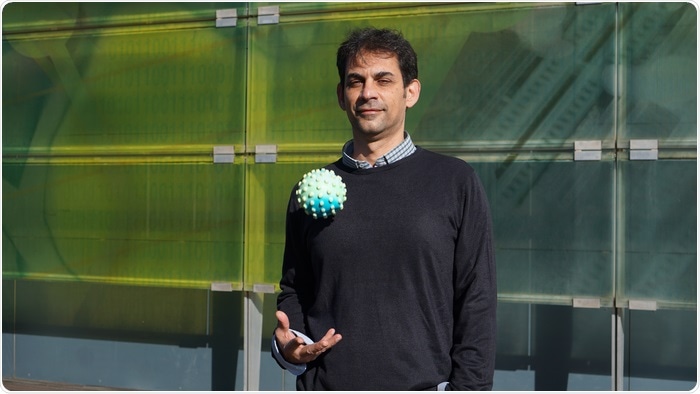Viruses are the major group of biological agents widely recognized. Now, an international research team with the participation of the Institute for Plant Molecular and Cellular Biology (IBMCP), a collaboration between the Universitat Politècnica de València (UPV) and the Spanish National Research Council (CSIC), has made significant progress in recognizing their diversification.

Marcos de la Peña, at the IBMCP (Universitat Politècnica de València-CSIC). Image Credit: Universitat Politècnica de València.
Using a modern computing tool that evaluated 5.7 million biological samples taken around the world during the last 15 years, researchers discovered more than 130,000 new RNA viruses (including the SARS-CoV-2 coronavirus that is currently affecting the COVID-19 pandemic). This discovery reflects a tenfold rise in the number of viral RNA species described to date. The study was published in the journal Nature.
To conduct this evaluation, the multidisciplinary team created Serratus, a cloud computing (Amazon Web Services, AWS) infrastructure that facilitated tremendous searches for viral sequences in the millions of Gigabytes (Petabytes) of sequencing data available in public datasets using a group of 22,500 computer processors (CPUs).
Over 30 new coronavirus species have been discovered as a result of a comprehensive examination of certain viral families, which include interesting examples in underwater vertebrates such as fish and amphibians, whose coronaviruses had a genome differentiated into two fragments, a feature described earlier in other virus families but not initially identified in any coronavirus.
UPV researchers used Serratus to analyze the virus that causes human hepatitis D, a viral agent called Delta with a small genomic size and unidentified source, at the Institute for Plant Molecular and Cellular Biology in the Polytechnic City of Innovation. This enabled CSIC researcher Marcos de la Peña Rivero of the IBMCP to detect similar viruses in a wide range of other animals, not only mammals and other vertebrates, but also invertebrates.
Surprisingly, these viruses were also found in environmental samples collected from lakes and soils all over the world, and their hosts are unknown for the time being.”
Marcos de la Peña Rivero, Researcher, Spanish National Research Council
Evolutionary connection between human and plant viruses in the environment
Furthermore, the existence of new viral forms with ultra-compact genomes of minute size was discovered in environmental samples that contain hepatitis D-like viruses.
This discovery allows us to advance a close evolutionary connection between viruses as distant as human hepatitis D and plant sub viral agents called viroids.”
Marcos de la Peña Rivero, Researcher, Spanish National Research Council
The information of all viruses acquired during this research, as well as the set of tools created, are both openly and publicly available (https://www.serratus.io).
These tools have the potential to be extremely useful in characterizing the uniqueness of all viruses that exist in the world and in preparing people for new potential pandemics. One such example is the catastrophic effects which people are currently experiencing with evolving viral diseases such as COVID-19, which is caused by the SARS-CoV-2 coronavirus.
Source:
Journal reference:
Edgar, R. C., et al. (2022) Petabase-scale sequence alignment catalyses viral discovery. Nature. https://doi.org/10.1038/s41586-021-04332-2.